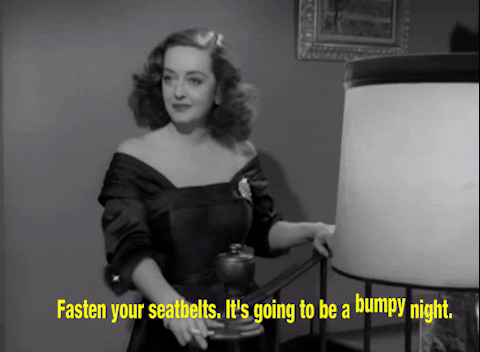When we last checked in on the Austin Police Department, it was plagued by staffing issues due to the City of Austin defunding the police and cancelling two cadet classes, as well as Travis County DA Jose Garza’s refusing to prosecute numerous felonies, thus putting numerous criminal back on the streets to commit more crimes.
Now this piece from Brad Johnson paints a picture of an undermanned department with a morale crisis.
The Austin Police Department (APD) is bleeding 15 to 22 officers per month as those departing join other departments or leave law enforcement entirely. With them goes decades of irreplaceable experience and left over is a void the City of Austin aims to fill with green recruits and a “reimagined” approach to public safety.
Political upheaval in Austin is not unlike any other situation in big cities across the country. Mass protests swept Austin as they did the nation last year after the death of George Floyd in Minneapolis, preceded by months of societal discord caused by the pandemic and related government shutdowns.
That was followed by grandiose promises by progressive politicians to “reimagine” the way police interact with their community.
Currently, APD has 200 vacancies and 104 officers on leave on top of the 150 positions eliminated during the 2020 budget cut and redirection. The department’s average response time ballooned from seven minutes to nearly 10 minutes since the summer of 2020. Specialized units are being disbanded and the officers who stay are being redeployed to street patrol to fill the gaps.
Snip.
Michele Aparicio first joined APD in 1997. She lasted 23 years with the department before retiring in 2020 a few months into the pandemic.
Aparicio, a Hispanic, told The Texan that morale has long been a problem within APD and pointed to leadership and its internal decisions as its cause. “Surely seniority and experience had always played a role in promotions, but it got to the point where demographics took precedence over all else,” Aparicio said.
This, Aparicio said, had plagued the department’s morale and devolved into poisonous interactions with its leadership.
“There was a point where we had a meeting with Chief Manley and I asked him what he was going to do for morale, and he just put it back on me as a supervisor,” Aparicio said, adding that she was later approached by one of her superiors who informed her Manley didn’t approve of the interaction.
“I had a lot of respect for Acevedo, he had his flaws, but he was not scared to speak up for what he believed and for all the officers of APD,” said Kyle Sargent, a former APD officer of 15 years.
Contrasting Acevedo with Manley, Sargent added that he felt the latter began falling more in line and catering his decisions with the city council in mind — then beginning to lurch even further left than it already had been. Officer morale, Sargent said, took a hit with that transition and as Manley’s tenure unfolded, but nothing sped up the trend like what’s unfolded since.
Snip.
One contributing factor Aparicio identified was the racial sensitivity trainings officers were put through. “They were literally calling us racist and homophobic officers — a whole class designed to make it seem like we were guilty of being racist, of being homophobic, and that we treated other people differently,” Aparicio said.
“It wasn’t presented as something like ‘Hey, this is what the nation is going through.’ No, it was presented as APD needs this because y’all are a bunch of racists.”
“So, the morale was already s— to begin with and then this was forced upon us,” Aparicio emphasized. During those classes, she added, the presenters faced some serious pushback from the APD rank and file and so they “were toned down a little bit.”
But it didn’t end there.
Continuing that trend, this year the Austin City Council entered a contract with a consulting firm to provide racial sensitivity training for its police heavily imbued with critical race theory teachings. The city is paying the consultant $10,000 per day.
See more on that story here.
Things are about to get worse.
A change in that buying forward rate is coming early next year. Sargent told The Texan he’s heard as many as 150 to 200 officers could leave in January next year before the change starts in February.
That would be over 13 percent of the current APD employment leaving in the blink of an eye.
When officers leave, they are often able to purchase their gun and badge as mementos of their career. But when Sargent resigned, this courtesy was denied to him per a new policy from interim Chief Chacon.
“It was just vindictive — I felt like he was just trying to punish us for leaving and it sort of put an exclamation point on my decision,” Sargent said. “It’s a small thing but it’s that kind of stuff that just brings morale from low to even lower.”
Other APD tidbits:
Yesterday, 99.97% of the patrol shifts worked with below authorized staffing. Only one shift at authorized level because they were able to fill vacant spots with partial shift overtime. #PropA is a staffing plan. We have not seen @MayorAdler's staffing or cadet hiring plan. https://t.co/pq50j0iE5X
— Austin Police Association (@ATXPOA) October 20, 2021
Just got off the phone w/the officer handling my case. Apparently there are only 3 detectives who are assigned to deal w/auto-theft in the ENTIRE CITY OF AUSTIN!!! Absolutely insane.
— Alex Strenger (@TheAlexStrenger) October 11, 2021
Police Department proposes new changes after APA speaks out on behalf of cadet employees forced to resign under the threat of termination due to testing positive for COVID-19. pic.twitter.com/vQdCetwH5T
— Austin Police Association (@ATXPOA) October 8, 2021
It’s going to take proposition A passing in November to keep things from getting much, much worse.
